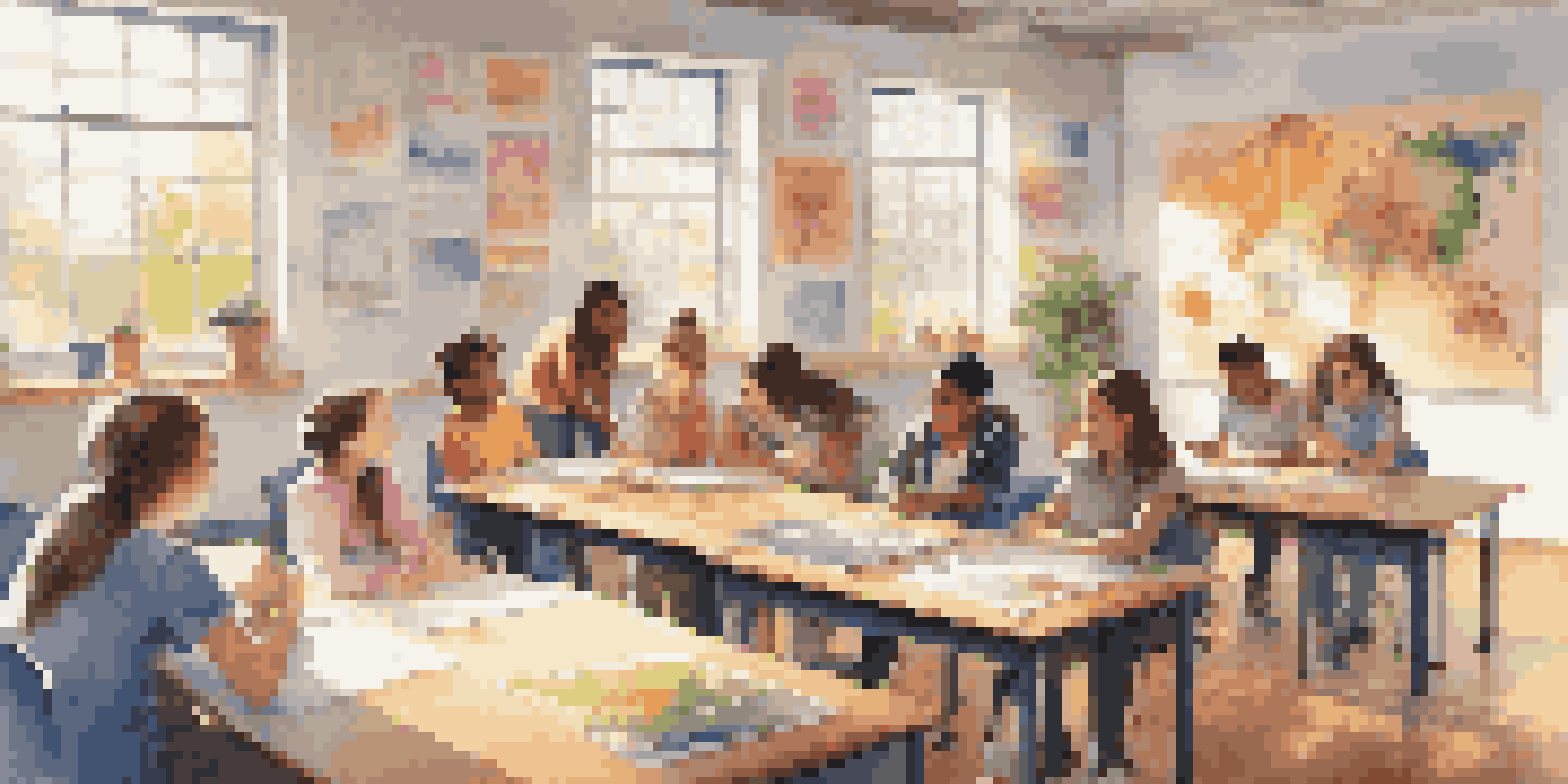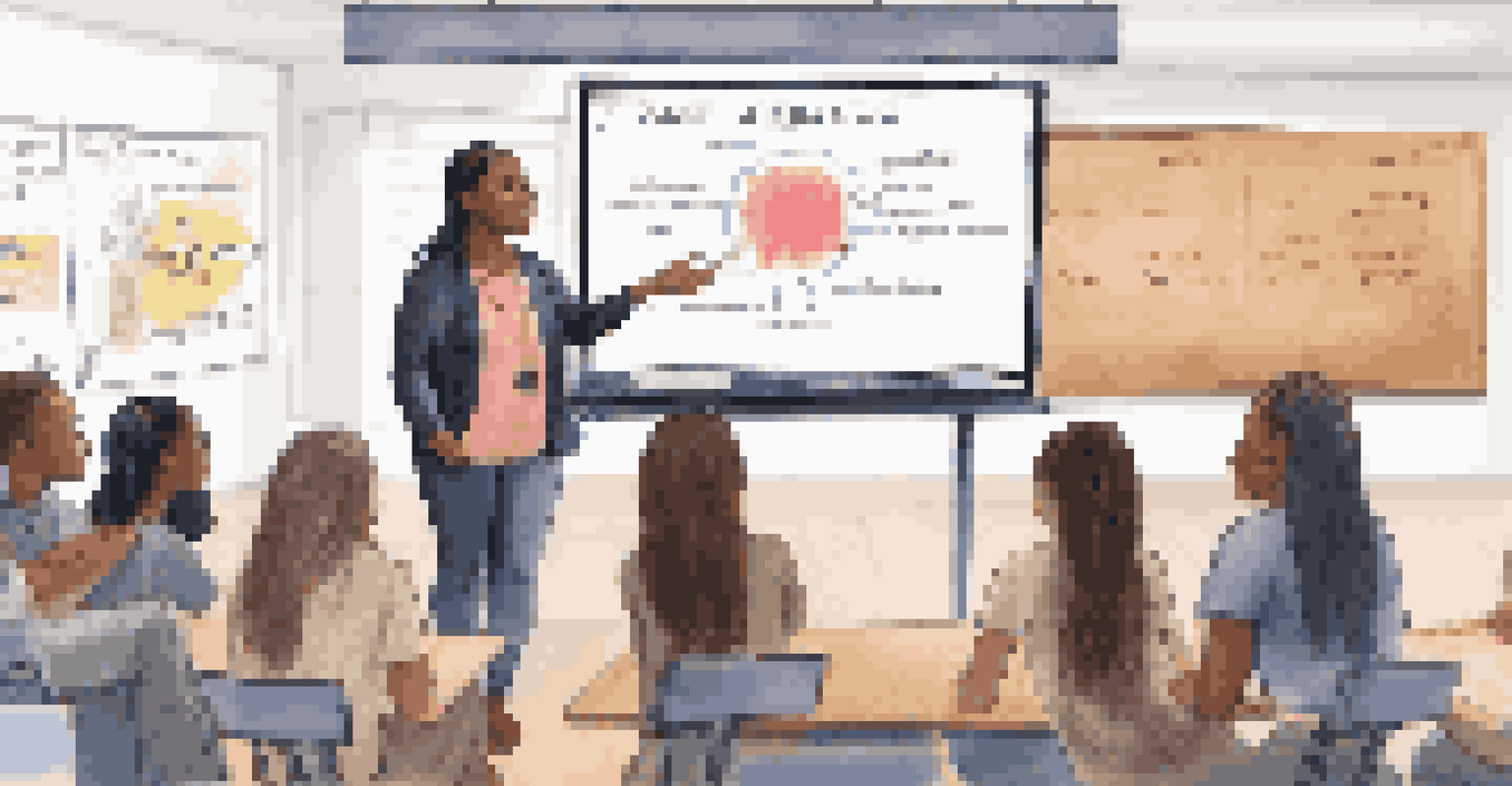Flipped Classroom: Creating Opportunities for Real-World Learning

Understanding the Flipped Classroom Concept
The flipped classroom model flips traditional teaching on its head. Instead of introducing new material during class time, students learn the content at home, often through videos or readings. This approach allows classroom time to focus on deeper understanding and practical applications.
In a flipped classroom, students learn content outside of class, and they engage in meaningful, collaborative activities in class.
Imagine a cooking class where students watch a recipe video at home and then come to class to cook and taste their creations together. This method promotes engagement and collaboration, making learning more enjoyable and effective.
By shifting the focus from passive reception of information to active participation, flipped classrooms foster a more dynamic learning environment that encourages inquiry and creativity.
Benefits of Real-World Learning Experiences
Real-world learning experiences bridge the gap between theory and practice. When students can connect classroom lessons to their lives, they find more value in their education. This connection not only boosts motivation but also enhances retention of information.

For example, a science class might conduct experiments that mimic real-life scenarios, such as testing water quality in a local pond. This hands-on approach allows students to see the relevance of their studies, making the learning process more impactful.
Moreover, these experiences help students develop critical thinking and problem-solving skills, essential traits for success in both academic and professional settings.
How Technology Enhances Flipped Learning
Technology plays a pivotal role in the flipped classroom model by facilitating access to resources. Students can watch instructional videos, engage with interactive content, and participate in online discussions from the comfort of their homes. This flexibility caters to different learning styles and paces.
The best way to predict the future is to create it.
For instance, educational platforms like Khan Academy or YouTube offer a wealth of resources that students can tailor to their individual needs. This access ensures that everyone can grasp the material before applying it in class.
Additionally, technology enables teachers to track student progress, allowing them to provide personalized support and feedback, further enhancing the learning experience.
Designing Effective Flipped Classroom Activities
Creating engaging activities for a flipped classroom requires thoughtful planning. Teachers should design tasks that not only reinforce the content but also stimulate critical thinking and collaboration among students. This might include group projects, discussions, or hands-on experiments.
For example, after watching a video on environmental science, students might work in groups to develop a project addressing a local ecological issue. This approach encourages teamwork and allows students to apply their knowledge in a meaningful way.
By fostering a sense of ownership over their learning, teachers can motivate students to actively participate, creating a rich classroom environment where ideas flourish.
Challenges of Implementing Flipped Classrooms
While the flipped classroom model offers numerous advantages, it also presents challenges. Not all students may have reliable access to technology or a conducive learning environment at home, which can hinder their ability to engage with pre-class materials.
To combat this, educators can provide alternative resources or allow time during school hours for students to complete their at-home learning. This ensures that all students have an equitable opportunity to participate.
Additionally, some educators may struggle with the transition from traditional teaching methods to a flipped approach. Professional development and support can help teachers adapt their strategies, ensuring effective implementation.
Assessing Student Learning in a Flipped Classroom
Assessment in a flipped classroom should reflect the active learning approach. Traditional testing methods may not capture the full extent of student understanding, so educators should consider alternative assessment strategies. These could include project-based assessments, presentations, or peer evaluations.
For example, students might be assessed on their group project regarding a local ecological issue, evaluating not only the final product but also their collaboration and research process. This comprehensive assessment provides a more nuanced view of student learning.
Incorporating self-reflection can also empower students by encouraging them to evaluate their growth and understanding, fostering a sense of accountability and motivation.
The Future of Flipped Classrooms in Education
As education continues to evolve, the flipped classroom model is likely to gain traction. It aligns well with current trends toward personalized learning and student-centered approaches. As educators seek innovative methods to engage students, the flipped classroom offers a promising avenue.
Moreover, advancements in technology will continue to enhance the effectiveness of flipped classrooms, making resources more accessible and interactive. This evolution could lead to even more engaging and impactful learning experiences.

Ultimately, the flipped classroom model not only prepares students for academic success but also equips them with the skills necessary to thrive in the real world, creating a generation of lifelong learners.